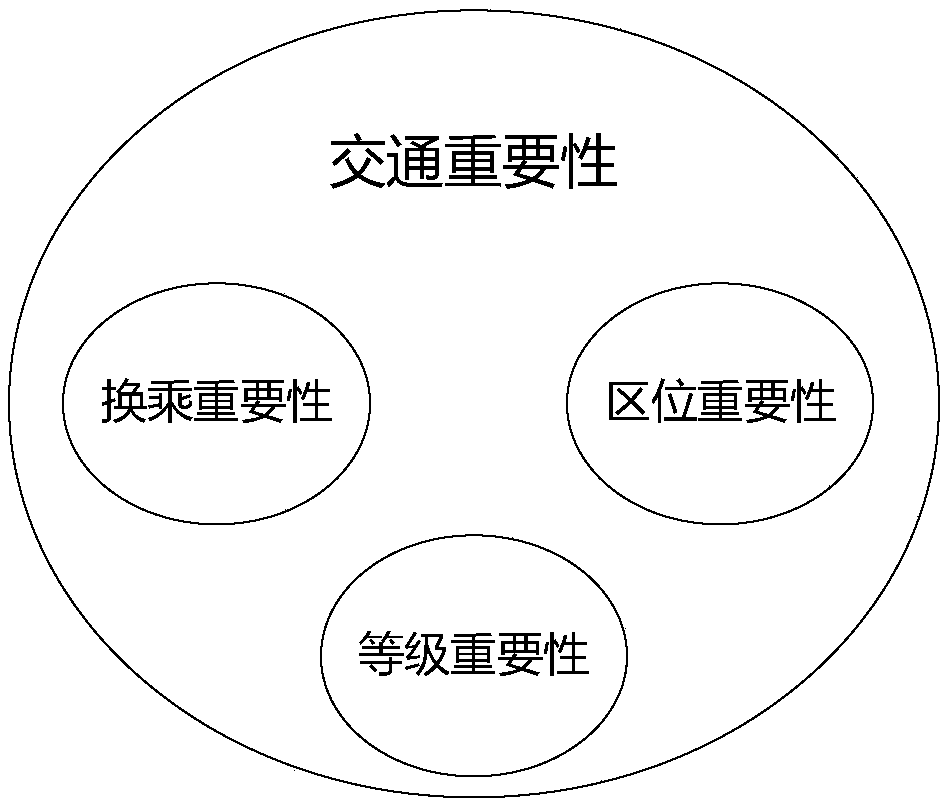Setting method for emergency rescue parking points of urban rail transit station
A technology for urban rail transit and emergency rescue, which is applied to the setting of emergency rescue parking points at urban rail transit stations. It can solve problems such as the increase in emergency rescue demand intensity, the impact on the importance of station traffic, and the occurrence of major accidents. Easy to understand, reduce emergency delays, and improve efficiency
- Summary
- Abstract
- Description
- Claims
- Application Information
AI Technical Summary
Problems solved by technology
Method used
Image
Examples
Embodiment 1
[0106] Embodiment 1: Taking the urban rail transit network of a city in China as an example, the traffic importance of urban rail transit stations is quantified.
[0107] 1. Passenger flow acquisition at the station
[0108] Apply to obtain passenger flow data from the urban rail transit operation organization of the city. The obtained data include: inbound passenger flow, outbound passenger flow and transfer passenger flow of each station.
[0109] 2. Quantify the importance of transfer
[0110] Through on-the-spot investigation, it is found that there are 288 stations in the city, and the types of stations are divided according to the number of lines of the stations. The results are shown in Table 3.
[0111] Table 3 Classification of urban rail transit station types
[0112] station type
quantity
Third Line Interchange Station
3
Second Line Interchange Station
35
non-transfer station
250
[0113] (1) Classify the transfer s...
PUM
 Login to View More
Login to View More Abstract
Description
Claims
Application Information
 Login to View More
Login to View More - R&D Engineer
- R&D Manager
- IP Professional
- Industry Leading Data Capabilities
- Powerful AI technology
- Patent DNA Extraction
Browse by: Latest US Patents, China's latest patents, Technical Efficacy Thesaurus, Application Domain, Technology Topic, Popular Technical Reports.
© 2024 PatSnap. All rights reserved.Legal|Privacy policy|Modern Slavery Act Transparency Statement|Sitemap|About US| Contact US: help@patsnap.com










